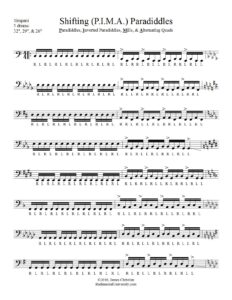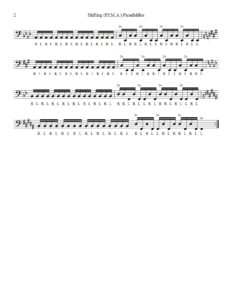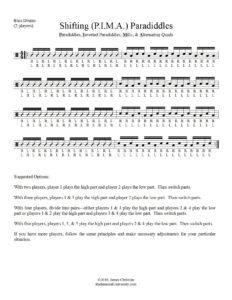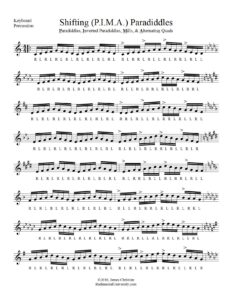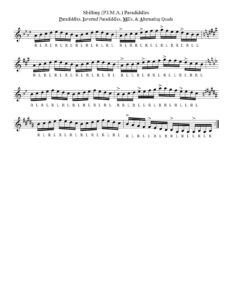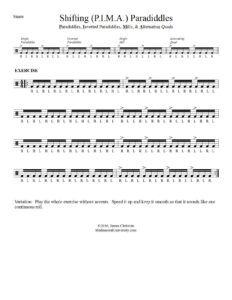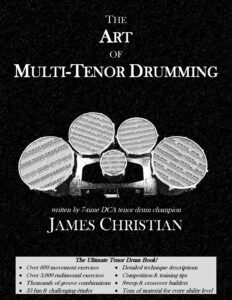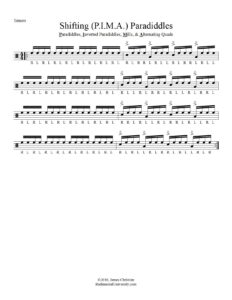 To view the exercise, click on the image to enlarge or click here to download in PDF format.
To view the exercise, click on the image to enlarge or click here to download in PDF format.
This entire week, we have been looking at different approaches to the “Shifting Paradiddles” exercise for various percussion instruments. We have previously looked at applications for snare drum, keyboard percussion, bass drum splits, and timpani. Our final instrument is the multi-tenors for marching percussion.
Before attempting this on tenors, it would be a good idea to review the snare drum exercise. This variation utilizes three drums. On the surface, it is pretty straight forward. The main thing that distinguishes this exercise from the snare drum version is that the accents are played as crossovers. The first two patterns—paradiddles and inverted paradiddles—are fairly simple to play as crossovers. However, the last two patterns—mills and alternating quads—are considerably more difficult.
As with all such patterns, make sure you bring out the accents, and keep the non-accents softer and closer to the drum. Contrast between accents and non-accents is of utmost importance in this exercise. Simply changing drums is not the same thing as an accent! It’s easy for tenor players to get lazy on accents and simply allow the momentum of moving from drum to drum to create a quasi-accent. When you play the accents with crossovers, make sure you are still bringing out the accents.
On the final four measures, play each pattern slowly at first until you feel comfortable with the quick movements involved in each crossover. On every double, be careful not to drop the second note. Strive for absolute smoothness in your 16th notes. Once you get everything down smoothly, every two measures should theoretically sound identical to the first two measures.
I hope you have enjoyed the exercises this week. Let us know what you think in the comments section. Do you like having an exercise that all sections can play together? Or would you prefer to see more specialized exercises for each instrument? Were these exercises a good challenge? Too easy? Too hard? Did you play through any of them with your percussion friends? Do you have any helpful tips to share?
Thank you for your feedback. We want to hear from you!

